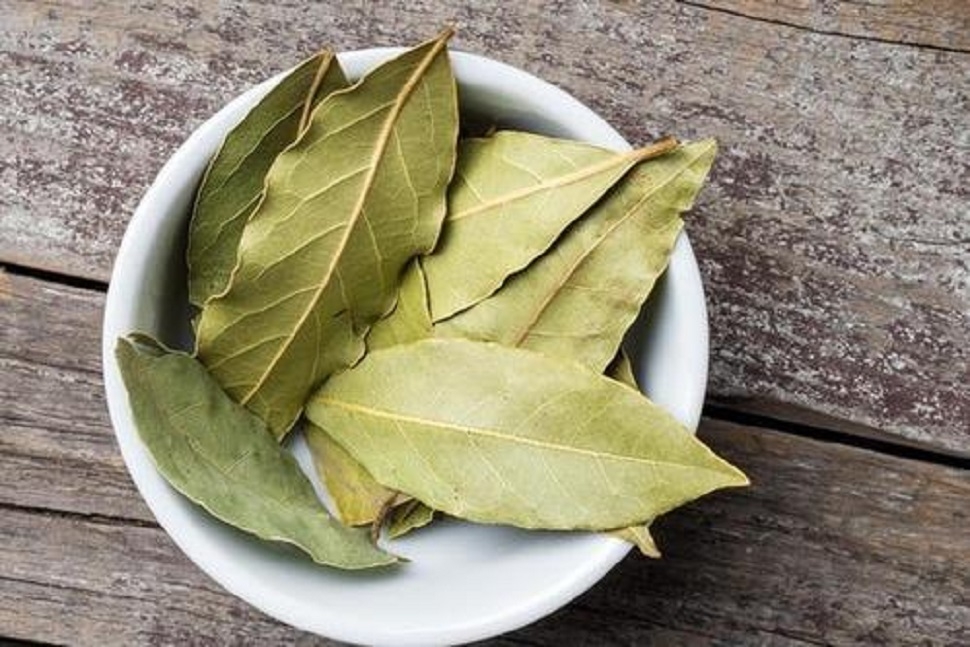Tamal Patra: A true miracle of nature
| Date :24-Apr-2019 |

By Rajendra Diwe:
The long pointed dried leaf used in Indian kitchens is known as Tamal Patra, Tejpatra, Tejpan, Bay Leaf, Tvakpatra, etc. Tamal Patra is its Sanskrit name which means Dark Leaf. Greek traders took that name changing it to malabathron. This name was then taken by the Romans as malabathrum or malobathrum. Many recent languages of Northern India have names for Indian bay-leaf that derive from that Sanskrit term, for example, Marathi Tamal Patra. In Hindi and some related languages, the spice is known as Tejpatta means pungent leaf.
Tamil has probably the most fitting name for this spice: Ilavanga Pattiri or cinnamon leaf. This is the most important ingredient of ‘Garam Masala’ and is also used as complete leaf in ‘Tadka’. This leaf is not only used in Indian kitchens as spice but also as a medicinal herb. There are multiple benefits of Tamal Patra which is scientifically known as Cinnamomum Tamala. This is the reason; this leaf is termed as ‘True Miracle of Nature’. There are number of botanical varieties of this plant. The major constituents of the leaf are essential oils with furano-sesqui-terpenoids as principal constituents. Furanogermenone is found to be the major compound in the leaf essential oil is ßcaryophyllene, sabinene, germacrene D and curcumenol.
The leaf oil was characterised by a high content of sesquiterpenoids, dominated mainly by furano-sesqui-terpenoids. Cinnamon leaf oil contains a variety of constituents including eugenolv and cinnamaldehyde, which is a local mucous and dermal membrane irritant. The major pharmacological activities of Tejpatra include: anti-diabetic, anti-bacterial, anti-oxidant, anti-ulcer, anti-microbial, anti-fungal, anti-inflammatory, analgesic, astringent, carminative, digestive, stomachic, emetic, diuretic, etc. It is used in the treatment of high blood sugar, migraine, headache, gastric ulcers, rheumatism, colic, amenorrhoea and many other health conditions. Most common use of this leaf is to treat coughs and colds. This is an important ingredient of Ayurvedic or herbal tea.
What grandmother says: u In cough, cold, excess mucus, allergy and other respiratory diseases; crush three to four Tejpan leaves, add one to two Tulsi leaves, boil it in 250 ml water. Cool, strain and drink warm. u Headache: Prepare paste of Tejpatra by boiling in water and apply the paste on forehead. u To treat lice in hair: 50 grams of crushed dry Tejpatra boiled in 400 grams of water. Reduce it to 100 ml, apply on hair roots, keep it for three to four hours and then wash. u It is used as hair tonic: Add Bhringraj in Tejpatra before boiling.
It will make hair strong, black, lustrous and healthy. u In respiratory diseases like asthma: prepare a mixture of five grams of Tejpatra powder with two grams of Jyeshthamadh powder, one gram Pipali or Sunth powder and boil it with 200 ml water, reduce it to 100 ml, strain and drink. u In indigestion, bloating and other digestive problems: Boil five grams of Tejpan with a piece of ginger in 200 ml water. Reduce it to one-fourth. Add one spoon honey and consume daily for two times. u In kidney problems, kidney infections and in kidney stones: Boil five grams of Tejpatra in 200 ml water reduce it to 50 ml, strain and drink twice daily. u In heart problems and anxiety: Prepare a mixture of three grams of Tejpatra with three to four grams of Desi Rose petals. Boil the mixture in 300 ml water, reduce it to 75 ml, strain and drink for relief. In angina pain, add two Lawang to above mixture and then boil the water and consume. u In uterus problems, urinary infections and other problems mostly occurred after child birth:
Take some Tejpatra, Dalchini, carom seeds and dry ginger Powder. Boil it in 200 ml water drink twice daily. u To relieve joint pains: Make a poultice of Tejpatra and Erand leaves powder and tie it around the inflamed joint. u For bleeding nose: Crush two to three fresh or dry Tejpatra, add 200 ml water, boil it till 100 ml remains and drink. u For clean teeth: Brush with Tejpatra powder once in three days.
References: u The Ayurvedic Pharmacopoeia of India published by Government of India Ministry of AYUSH 2016 u WHO Monographs on Selected Medicinal Plants, Published by World Health Organisation 1999 u Glossary of Indian Medicinal Plants by R N Chopra, Drug Research Laboratory, Jammu and Kashmir, L Nayar Central Drug Research Institute, Lucknow published by Council Of Scientific & Industrial Research New Delhi 1956 u Earl Mindell’s Herb Bible, published by Simon and Shuster New York in 1996 u Ayurved Ka Pran, Vanaushadhi Vidnyan, published by Department of Garden and Herbs, Shri Vedmata Gayatri Pariwar Trust, Shantikunj, Haridwar (Uttaranchal) u K M Nadkarni’s Indian Materia Medica, published by Bombay Publication 1976 u Text book of Pharmacognosy, T E Wallis, CBS Publishers and Distributors New Delhi u Pharmacognosy and Pharmacobiotechnology, Ashutosh Kar, New Age International Limited, New Delhi.